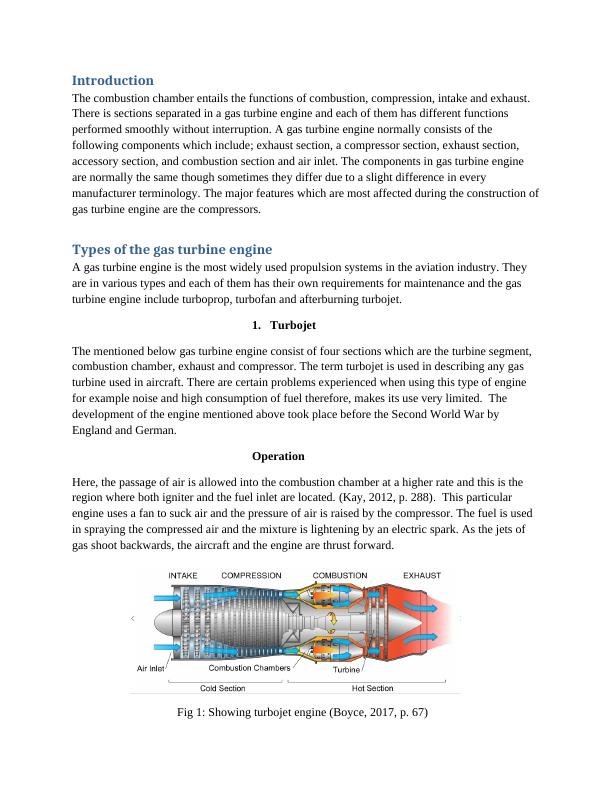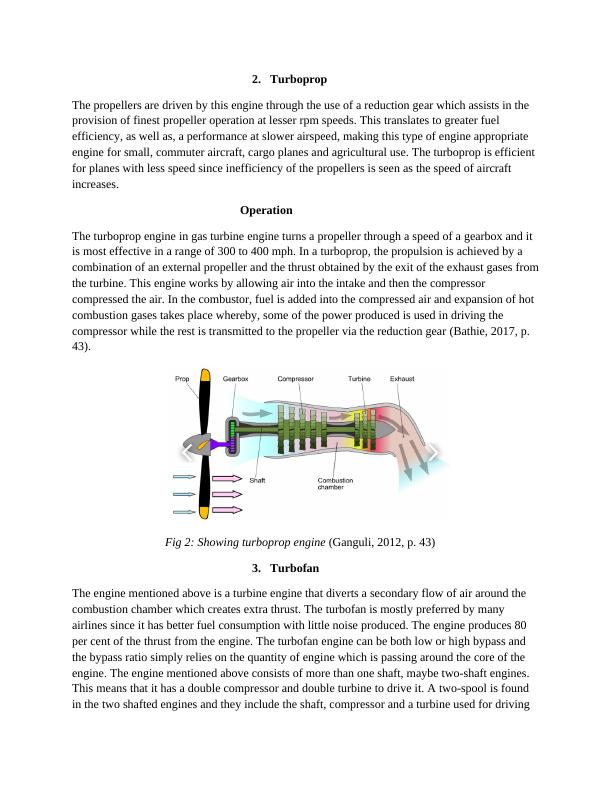Gas Turbine Engine: Types, Operation, and Maintenance
10 Pages2949 Words165 Views
Added on 2023-04-21
About This Document
This guide provides a comprehensive overview of gas turbine engines, including their types, operation principles, and maintenance procedures. It explores the different types of gas turbine engines, such as turbojet, turboprop, turbofan, and turboshaft engines, and explains how each type works. The guide also discusses the importance of using sustainable materials in gas turbine engines and highlights their reliability. Additionally, it introduces new propulsion technologies, such as maglev and marine propulsion, and examines the relationship between gas turbine engines and the environment.
Gas Turbine Engine: Types, Operation, and Maintenance
Added on 2023-04-21
ShareRelated Documents
End of preview
Want to access all the pages? Upload your documents or become a member.
Working Principles of Jet Engines: Turbojet and Turbofan
|5
|1132
|31
Design and Construction of Turbine Engines PDF
|2
|676
|309
Operation and Performance of Turbine Engine
|5
|805
|308
Pelton Turbine Design and its Suitability for Aircraft Application
|4
|810
|69
Thermodynamics: Four-Stroke and Two-Stroke Engines
|12
|2732
|459
Components and Systems Operations of Turbine Engines Report
|3
|1049
|283



